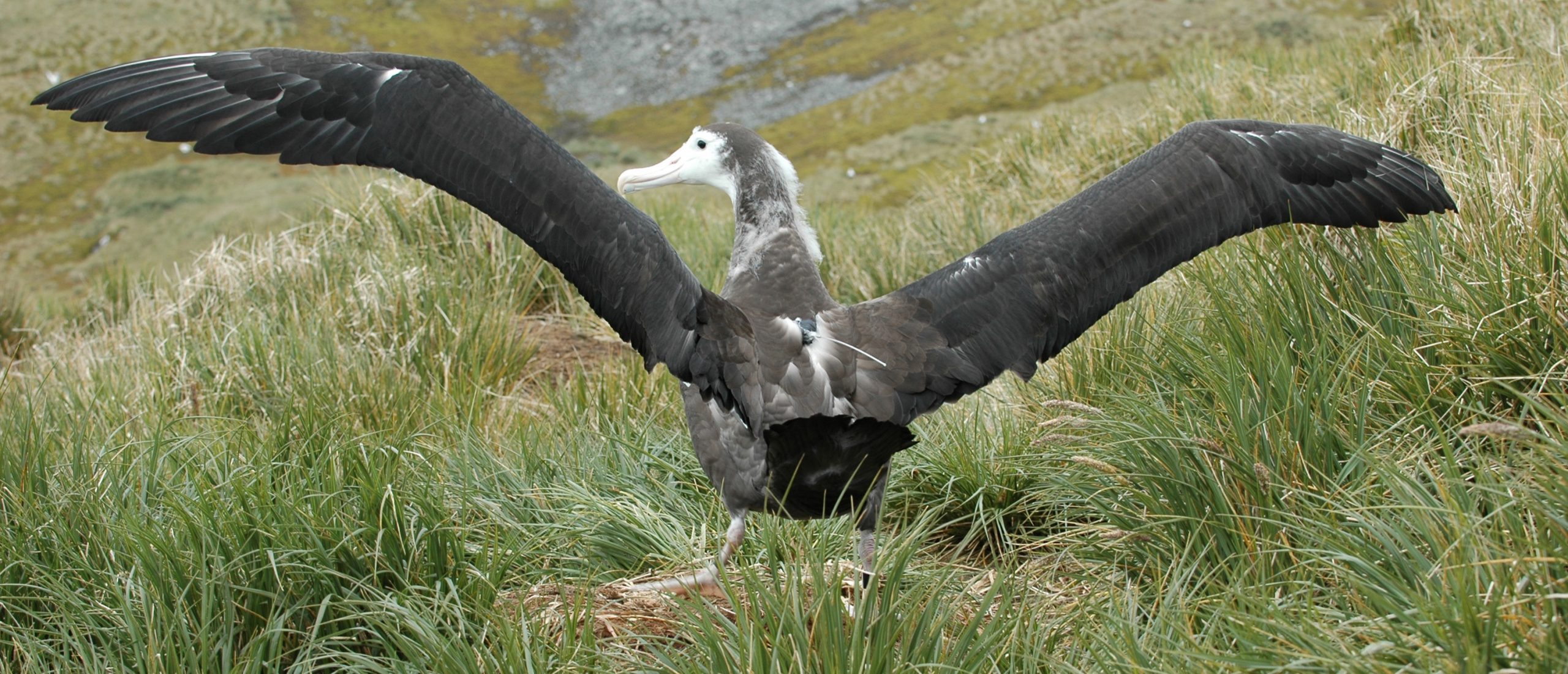← Back
Argos helps in assessing fisheries bycatch risks to seabirds

After more than thirty years of Argos satellite telemetry, the extensive datasets that have accumulated can be used in diverse, large-scale studies. Incidental mortality (bycatch) in fisheries threatens Southern Ocean seabirds such as albatrosses and petrels. Data from the Argos system can be combined with other tracking data for comprehensive analyses of overlap between fisheries and the birds’ feeding habitats, and thus evaluation of bycatch risks to seabirds.
One of the most topical applications of satellite telemetry is to assess areas used by marine animals and by fishing fleets in order to understand potential threats.
Seabirds’ vital role
Seabirds are long-lived, late to mature and have low reproductive rates, thus making their populations sensitive even to small increases in mortality. Seabirds can swallow baited longline hooks or strike trawl warp and other cables. Ecosystem-based fisheries management involves both minimising bycatch of non-target species and establishing sustainable harvesting of target stocks. As upper trophic-level predators, seabirds have a vital role in the ocean ecosystem and their decline can have a major impact on cycling of nutrients. Regulations can be put in place to mitigate seabird bycatch, but require enforcement. Although management of some fisheries has improved greatly in the last 1-2 decades, seabirds are so wide-ranging that the threat may persist elsewhere. For example, although the risk to globally important albatrosses and petrels breeding at South Georgia has been minimal in the local fisheries since the early 2000s, the populations remain in steep decline because of bycatch in other parts of their range.
Bycatch risks to seabirds depend on one side on the distribution, type and magnitude of fishing effort, and on the other, on the distributions and habitat preferences of the birds. In addition, most tracking of seabirds has focused on breeding adults, and we are still missing such information on other life‐history stages (failed breeders, juveniles and immatures).
Analyzing a large database of tracks
A large database of tracks from Bird Island (South Georgia, South Atlantic) including 1,692 tracks (many of them involving Argos satellite telemetry, such as the ones used in Tracking of juvenile grey-headed albatrosses ) for 788 individuals of all ages from four different seabird species was analysed in relation to longline and trawl fisheries activities in the Southern Ocean. The main aims were to determine where and when birds were at greatest potential bycatch risk, and from which fleets. Those four breeding populations – grey‐headed (Thalassarche chrysostoma), black‐browed (Thalassarche melanophris) and wandering (Diomedea exulans) albatrosses, and white‐chinned petrels (Procellaria aequinoctialis) – are considered to be high priorities for conservation because of their global importance and high rates of decline. Monthly population‐level distributions were estimated from tracking data, weighting each life life‐history stage based on demographic models.
![Composite year-round distribution of (top to bottom) grey‐headed, black‐browed and wandering albatrosses, and white‐chinned petrels from South Georgia based on monthly distributions in 5 × 5° squares. Colour scale indicates percentage of the population in each grid cell. [Clay et al., 2019]](https://www.argos-system.org/wp-content/uploads/2022/02/J_Appl_Ecol_Clay_SG_albatrosses_WCP_bycatch_risk-2.jpg)
Composite year-round distribution of (top to bottom) grey‐headed, black‐browed and wandering albatrosses, and white‐chinned petrels from South Georgia based on monthly distributions in 5 × 5° squares. Colour scale indicates percentage of the population in each grid cell. [Clay et al., 2019]
More info about birds tracking
Bycatch risks to seabirds
Results show that the overlap between the birds’ at-sea distributions and longline fisheries was highest for black-browed albatrosses, while for trawl fisheries, it was highest for white‐chinned petrels. Geographically, the birds overlapped with fisheries in all ocean basins, but particularly with longline and trawl fleets in the South Atlantic, and longline fleets in the south-west Indian Ocean. It was possible to identify which national fleets overlapped the most with the birds and therefore presented the greatest potential bycatch risk. There was also a strong seasonality in the relative overlap.
![Annual overlap with pelagic and demersal longline and trawl fisheries averaged across months and years for each species (black‐browed, grey‐headed and wandering albatrosses, white‐chinned petrels) [Clay et al., 2019]](https://www.argos-system.org/wp-content/uploads/2022/02/J_Appl_Ecol_Clay_SG_albatrosses_WCP_bycatch_risk-fig5full.png)
Annual overlap with pelagic and demersal longline and trawl fisheries averaged across months and years for each species (black‐browed, grey‐headed and wandering albatrosses, white‐chinned petrels) [Clay et al., 2019]
Reference & links
- Thomas A. Clay, Cleo Small, Geoffrey N. Tuck, Deborah Pardo, Ana P. B. Carneiro, Andrew G. Wood, John P. Croxall, Glenn T. Crossin, Richard A. Phillips, 2019: A comprehensive large‐scale assessment of fisheries bycatch risk to threatened seabird populations, Journal of Applied Ecology 56, 1882-1893. DOI: 10.1111/1365-2664.13407
Photo: a wandering albatross chick shortly before fledging at Bird Island (South Georgia), fitted with an Argos PTT (Credit BAS)
